Photo
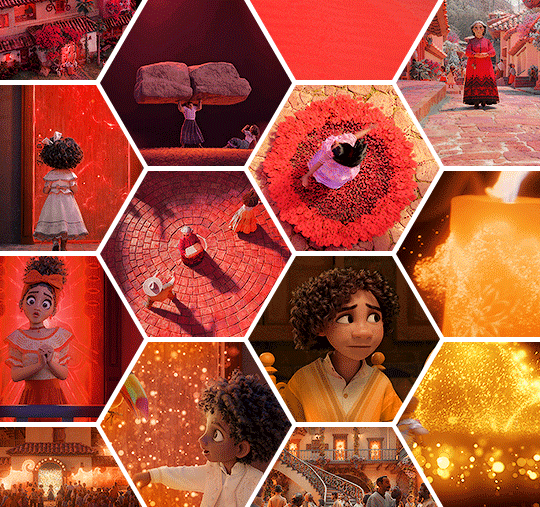



@pscentral event 16: pride colors
layout
1K notes
·
View notes
Note
How is life going Raven!
Life is going good! Doing a lot of chill time because I was (and am) feeling reallyyyyyy burnt out.
Right now, my fix is Legend of Zelda. I’m playing through Tears of the Kingdom rn. I’m currently about halfway through the main story and I’m obsessed with Zelda and Link—but obviously I’m not done with the story so I’m afraid to look anything up.
Thanks Nonny. I hope your life is good.
0 notes
Note
Will you watch Heartstopper?
I’m not sure. I’ve heard so many good things about it and I’m interested in it, but I haven’t been watching a lot of shows lately so I’m not sure. If I do, I might not interact with the fandom as much; but who knows I could change my mind lol
2 notes
·
View notes
Text
OTP Prompt Challenge
Choose a pairing and a prompt and create something with it. You can write, you can draw - be creative!
Meet-cute
Bickering
Hand holding
Cooking together
Blushing
Firsts
Stargazing
Confessions
Morning routine
Sneaking glances
Argument
Grocery shopping
Dancing
Little gifts
Sharing a bed
Family
Pet names
Hugs
Matching outfits
Date night
Secretive
Comfort
Vacation
Washing dishes
Flowers
Sick days
Kisses
Flirting
Adopting a pet
Insecurity
Proposal
If you like my blog and want to support me, you can buy me a coffee! And check out my Instagram!🥰
#these are all literally so cute#i need to write them lol#small requests? jk… unless???? 👀👀#prompt list#dialogue ideas#writing challenge
3K notes
·
View notes
Text

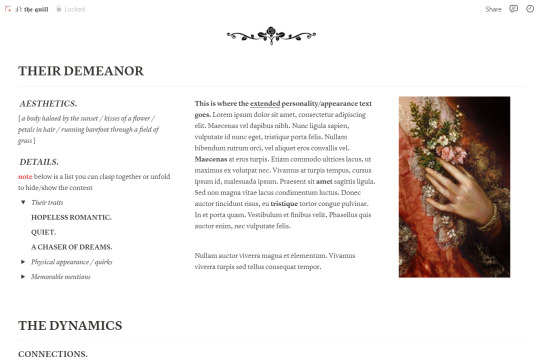
ALL-IN-ONE CHARACTER PAGE NOTION: “THE QUILL” *
a highly customizable, simplistic but detailed notion template for writing and creating characters based on the best curated writer advice and how-tos. perfect for exploring and creating a character while keeping their information aesthetically-pleasing to look at. use this both as a template and a guide to develop your characters while working on your wips! to download / copy, click “duplicate” top-right to copy it to your notion.
* perfect as an extension of the "transcripts" notion template.
features:
overview / introductory section (including the lie, the want, the ghost, etc.)
history section including a side for excerpts
interactive and simple overview of character arcs to choose from (including development questions based on the arc chosen)
magic section (if applicable)
personality and appearance section
interactive and simple overview of relationships
tags system for relationships (e.g. relationship dynamic, character role)
note-taking section with a simple to-do list
please like / reblog if you’re using or interested in using it!
2K notes
·
View notes
Text
Writers: If you enjoyed writing it, that’s enough. Writing can be an end in itself. It doesn’t have to be “good” by anyone else’s standards. It doesn’t have to be published or validated in any way. Delight in putting words on the page. Delight in falling down pretty rabbit holes that might not “make sense” to others. IT’S OKAY TO WRITE JUST TO WRITE, just to have fun, just to please yourself. This is your permission slip. Go forth and create nonsense. I’m cheering for you. xo
26K notes
·
View notes
Text
Editing Tip: How to Speed Up or Slow Down Your Pacing
Hey friends. I’ve been thinking a lot about pacing lately, as I’m in the process of editing a few of my own stories, which tend to be too slow in the beginning and too fast in the end. Fortunately I have a ton of experience speeding up or slowing down pacing when I edit my clients’ manuscripts, and I wrote up a whole section about it in my book The Complete Guide to Self-Editing for Fiction Writers.
One important thing to keep in mind about pacing is that there’s no one “right” pace—each story and genre need something different. A crime thriller will usually have faster pacing than a character-driven literary novel; language-focused writers will usually create slower-paced stories than plot-focused writers. So when you’re revising your pacing, It’s about finding the right pace for your story.
At the same time, remember that stories generally build in tension, continually ramping up the conflict until it crests at the climax and falls at the resolution. While you’ll want some ebbs and flows in tension so the reader doesn’t get completely exhausted, the story shouldn’t feel resolved for too long without introducing another problem or further complicating the conflict.
A story’s pace is controlled by a number of factors but luckily, there are pretty much only two problems you can have with your pacing. A story can be too slow (which usually feels boring), too fast (which can produce a lot of anxiety), or a combination—too slow in some parts, too fast in others.
In either case, you’ll need to learn how to put the brakes on or apply the gas as needed to moderate your pacing.
Speeding Up Slow Pacing
If we feel the pacing is too slow, it’s usually either because a scene is too long, too wordy, or not enough is happening. The result is a sense that the story is dragging, and a lot of yawning on the part of the reader. When the pace feels slow, we will naturally start to skim or read ahead to find out “what happens.”
Let’s look at how to address each of the three main causes of slow pacing.
Too long. Sometimes the pace feels slow because your scene is simply too long. To remedy that, you might need to start the scene later, end it earlier, or cut slow transitions where not much is happening. Shorter sentences and more frequent paragraph or scene breaks can also help to break up a lengthy scene and make it feel like it’s moving faster.
Too wordy. The more words you use, the slower the pace. Long passages of description, excessive dialogue or inner monologue, info dumps, repetition, and filler words are often to blame. If you simply can’t bring yourself to cut excess words, you can also try breaking up long sentences or paragraphs to give the illusion of a quicker pace.
Nothing is happening. A lack of goals, conflict, or stakes can lead to the feeling that “nothing is happening” in a story. Has your character slipped into the bathtub to ruminate at length on an issue that she’s already mulled over a thousand times before? Have you used five pages to detail a long, boring traveling sequence that should’ve been summarized in a few sentences of transition? If your scene has scant conflict, and no change by the end of the scene, it may need to be rewritten or cut in order to improve your pacing.
Slowing Down Fast Pacing
On the other hand, if a story’s pace is too fast, an excess of action and dialogue are usually to blame, as well as short, choppy sentences, and a ceaseless maelstrom of conflict. In that case, you have the opposite problem: Your scenes are either too short, too shallow, or too much is happening.
Too short. Short sentences, paragraphs, scenes, and chapters pick up the pace of a story, but can leave readers exhausted when overused. Mix it up, using longer sentences or paragraphs slow the pacing where needed. You can also lengthen action- and dialogue heavy scenes by adding brief spurts of description, inner monologue, or narrative summary.
Too shallow. An action-paced scene often skims over the deeper, more nuanced aspects of the story like theme, emotional depth, and character development. If your too-fast pace is the fault of a flat character, take a moment to let readers know what’s driving her with a few sentences of interiority or narrative summary. The more readers feel like they’re inside your protagonist’s mind and heart, the deeper and slower your scene will feel. Description can also help give depth to a shallow scene—all that action and dialogue isn’t taking place in a vacuum, and writing it that way can shift your story into turbo speed in no time at all.
Too much happening. If your protagonist is fighting off a centaur in a crowded marketplace, resolving a longstanding resentment with her brother who works at the tomato stand, looking for a choice hiding place for a trunk of buried treasure, wooing the delivery boy, and realizing the true nature of love and war all in the same scene, you might need to dial it back to control your pacing. Decide which storyline is the most important to highlight, and push all the others into the background or save them for another scene.
No breathers. If the protagonist never gets a chance to catch her breath, readers won’t either. Look for places where she can pause and reflect, like right after a problem is resolved or a new one is discovered, when new information is revealed, or as your character undergoes an important internal change in her motivation or perspective.
Hope this helps!
3K notes
·
View notes
Text
Quick editing tip: Passing time
Hey all, here’s a quick tip about showing the passage of short amounts of time in a scene. I see a lot of beats like this:
She hesitated
He paused
A few seconds later
There was a long silence
He waited for her to answer
She didn’t respond
Instead of telling us there’s a brief moment of silence or pause in your scene, try showing us by creating the feeling that time has passed through action, description, or inner monologue. Here are a few examples.
Before:
“Are you coming or not?”
He waited for her to answer, but she didn’t respond.
“Clare? Did you hear me?”
“Huh?”
After:
“Are you coming or not?”
Clare scrolled through her phone, her face illuminating with a eerie blue glow.
“Clare? Did you hear me?”
“Huh?”
Before:
Jared lingered at the suspect’s front gate. If this guy didn’t answer Jared’s questions, he was screwed.
“Hey you!” a voice shouted. “Get off my property!”
Jared hesitated. Finally, he turned to face the man. “I’m afraid I can’t do that.”
After:
Jared lingered at the suspect’s front gate. If this guy didn’t answer Jared’s questions, he was screwed.
“Hey you!” a voice shouted. “Get off my property!”
Jared patted his holster. He had a gun, but he certainly didn’t want to use it. Taking a deep breath, he turned to face the man. “I’m afraid I can’t do that.”
Not only does creating a pause instead of describing a pause allow your reader to feel the moment more vividly, it gives you a chance to explain what exactly that pause is about. People hesitate, pause, don’t respond, etc. for all kinds of reasons. Give us as much insight as you can into your weird quiet moment.
Of course, you don’t need to do this every single time. Sometimes it’s fine to say “he paused” or “the room was quiet for a moment”—it could be the best choice for that scene. But look back through your draft and see if you’ve used those “telling” descriptions more often than you needed to. If so, try to create the feeling of a pause—perhaps one that gives the reader a bit more information—using these techniques.
Hope this helps!
13K notes
·
View notes
Text
To any fic writers who worry they are wasting their time... I read a fic for a relatively small and inactive fandom about three years ago. And there was one specific scene where a character watched another dancing like an idiot to a beyonce song and it was so sweet and loving that even now years later I have that song on one of my spotify playlist so every once in a while it will play and remind me of that fic, and every time it does I smile and feel a little happier.
The stats on a fic will never really tell you if your writing touched someone. There's no numerical way to show you what impact you made. Maybe you are wasting time, or maybe you are writing something that someone will remember for a long time, something that will never fail to make them smile.
99K notes
·
View notes
Text
8 Ways to Improve Your Writing
I got a great anonymous ask last week from someone who wanted to know how to identify weak spots in their writing. One of the things that comes with time and experience is finding the language to identify, discuss, and address the feeling that something isn’t quite right or that a story is “missing something.” Not knowing them or their writing, of course I couldn’t help them figure out what specifically the problem was. But I did share with them a list of things I’ve done over the years to be able to identify weak spots and improve my writing.
1. Analyze your favorite writers.
Figure out why you like the writing that you like. Ask yourself: What are they doing here? What are they doing that I’m not doing? Why do I love their writing so much? Take notes on their stories. Plot them. Write in the margins. Read them slowly. Read their reviews—both good and bad. Did that writer you love once write something you hated? Great, even better. Figure out why that particular book was different from the others.
2. Analyze your own writing.
Do you have an older story you wrote that you love? Figure out why. What did you do differently in that story that you’re not doing in the current story you’re writing? Make notes. Draw maps. Reverse engineer everything.
3. Develop a language to talk and think about writing.
Read craft books, blogs, anything you can get your hands on. Learn about point of view, conflict, character development, dialogue, story structure, syntax, metaphors. Get your advice from good sources, and don’t believe everything you read. If something doesn’t sit right with you, throw it out. But be open to everything.
4. Journal and write about your writing.
Over time, you will identify consistent weaknesses that you have. Then, in the future, when you feel like “something is missing” from your writing, you can reference your notes and remember, for example, that you often have difficulty with your protagonist’s motivation, with theme, with dialogue, etc., and you’ll have a better idea about where to go looking.
5. Share your writing with someone you trust, ideally a more experienced writer than you or an editor or mentor.
Be very careful about who you share your writing with. Friends and family are not always the best choice. You don’t want someone who’s just going to throw around their uneducated opinion about your work, who has a big ego, or who won’t be honest with you. Remember: “I liked it” or “I didn’t like it” are useless pieces of feedback. You want someone who can read your work and say, “Your protagonist’s passion for music made them really likeable to me. I was dying to know whether they would get into the conservatory or not!” or “My attention wandered on page two, when you described the couch upholstery for three paragraphs.”
6. Analyze the areas of your writing which are commonly problematic for new writers (and writers in general).
In my experience as an editor, the most likely culprits are unclear character motivation and lack of conflict. There are a lot of good resources (books and blogs) about this. Try a Google search for “most common mistakes beginning writers make.”
7. Trust your intuition.
Do you keep coming back to the same page or scene in your story, feeling like it isn’t right? You’re probably onto something.
8. Take time away from your writing.
You’d be amazed how much more clear everything will be after a break. Give yourself at least a week for a short story, 3-4 weeks for a novel. It could also be the case that your ambitions for this particular story don’t yet match your skills, and that you’ll have to wait even longer to successfully finish it. I’ve known writers who have given up on a story only to come back to it months or years later once they’d gained the skills and insight to complete it. And then suddenly writing that story seemed really easy!
//////////////
The Literary Architect is a writing advice blog run by me, Bucket Siler. For more writing help, check out my Free Resource Library or get The Complete Guide to Self-Editing for Fiction Writers. xoxo
16K notes
·
View notes
Text
Yesterday, and last night, I thought about my story and my own motivations. While I wanted to tell the story that I had built up in my mind, with all the changes and love I had in store, I found it really hard to push through and write the story. I love Harry Potter. I love the wtfock characters. But, as of right now, I’m forcing myself to write this story—not pushing through, but forcing myself.
So, while I am still hopeful to continue the story someday, I’ve decided that I need a break right now, to focus on myself, and what I really want. I hope you guys understand. I’m sorry.

12 notes
·
View notes
Note
OMG WAIT I DIDNT EVEN NOTICE THE LAYOUT ON THIS BLOG UNTIL I SAW YOUR POST IT LOOKS SO GOOD!! THE ROCK OMFG SLXLSKD
that’s okay I just did it last night lol 😂😂 but thank you so much 🥺🥺🥺 YES I HAD TO HAVE THE ROCK BECAUSE ITS SO YOU(S)MINA THAT I HAD TO USE IT!!
4 notes
·
View notes
Text

Get to Know the Original Character (1/?): Celeste Maes
Full Name: Celeste Ann Maes
Birthday: Unknown
House: Ravenclaw
Blood Status: Muggleborn
More Character Info Under The Cut!
The only child to a Muggle couple with long-forgotten magical heritage, Celeste remained unaware of her abilities until Headmistress Contessa Lestrange knocked on her parents’ door. There were a few instances of magic before, as with all children, but they had been written off as forgetfulness or simply seeing things. Her parents were thrilled at the prospect of Celeste being a witch and did everything to ease the move.
Overall, Celeste belonged in the Ravenclaw house above all else. Her love of art was only one aspect of the Hat’s choice. She had a profound love of learning new things—eagerly scooping up every ounce of new information that she could achieve. History was, to her admission, one of her favorites. She had been the first student in her year to discover how to safely charm her own hair and, since then, it had been charmed a shade of blue. However, she loved learning new things to a fault; sometimes, she would shove aside her current assignments in favor of a new spell or a new book, leading her to struggle in some classes.
In her first year, Celeste Maes stumbled upon Gill De Schepper in a train car and they became fast friends, both being sorted into the Ravenclaw house among their arrival. Later the following summer, Celeste would also meet and become friends with Amelie De Smet, Gill’s best friend besides her, who was a year behind them. When Amelie came to Hogwarts, Celeste grew close to Amelie’s friends in her own year and they all wore matching pendants. After Amelie’s accident, while Senne and his family pushed them away, the girls had only become closer. Once a year, around Amelie’s birthday, her four closest friends would meet together and have dinner with just them.
On their first day of Potions with the Slytherins in year one, Celeste was paired up with Sander Driesen... and the two quickly bonded over their hatred of the (at the time) Potions professor and their mutual love of art. As a result, the two of them had become virtually inseparable and quite close. They would always help with the Quidditch Kick-Off Party, designing the flyers with other artists from Hufflepuff and Gryffindor. Celeste thought that Sander was the closest that she would have to a sibling—and Sander felt the same.
While Sander had his own studio, an abandoned classroom in some forgotten hallway, Celeste’s favorite spot in Hogwarts was the Astronomy Tower. Being able to be out in the air and see the stars was one of her favorite pass times, especially on nights when she could not sleep. And, it was the subject of many of her drawings. On rainy nights, she would find herself a high enough classroom in one of the towers and sketch the rain falling on the lake.
As a child born in the Muggle Age of Technology, Celeste has more knowledge of technology and the internet than most of her pureblood peers. However, she has to be careful about what she says to her Muggle friends from primary school and back how. They have no knowledge of magic and, due to magical laws, they cannot know. This aspect weighs on Celeste heavily, especially as she has one Muggle friend that she’s still “somewhat” close to.
#wtfock#wtfockfic#hogwarts au#hogwartsauoc#oc: celeste maes#oc: celestealfaes#brennawrites#long post
14 notes
·
View notes
Text
Would anyone potentially be interested in a “Get to Know the OC” series with Val, Celeste, and Sophie in my Hogwarts AU? If not, I’ll probably do it just for me lol.
3 notes
·
View notes
Photo
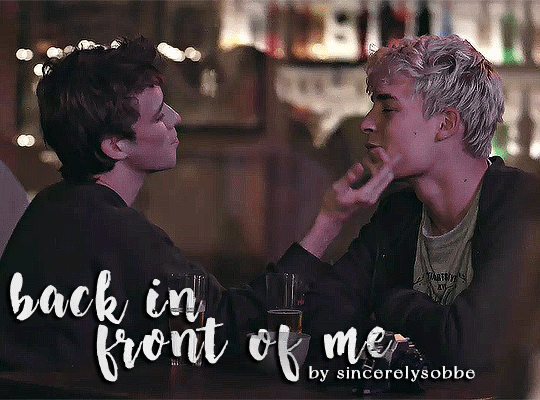
back in front of me:
Sander heard Celeste begin to respond to Elias, could see that her mouth was moving and Elias was nodding, but her words were quickly overwhelmed and drowned out… by the sound of an all-too-familiar, melodious laugh. It was a laugh that Sander would know anywhere and one that Sander would remember until his final day alive. It was the laugh that Sander had loved to hear from his childhood best friend, one that made him smile and be filled with joy so easily. The laugh was ripped from the chest of its owner so the world could be blessed with the enlightening sound.
It did not take long before Sander found the source of the laugh, standing next to Senne and his girlfriend of a few weeks, Zoë.
Robbe IJzermans.
word count: 14k
relationships: sander driesen/robbe ijzermans
background relationships: yasmina ait omar/younes el amrani, zoë loockx/senne de smet, moyo makadi/noor bauwens
tags: the sander and younes are roommates agenda, the sander and yasmina are friends agenda, the sander and senne are friends agenda.
no archive warnings apply.
READ ON AO3
#wtfock#wtfock fic#sander driesen#robbe ijzermans#sobbe#rosander#drijzermans#brennawrites#this is going to disappear in the tag but that's FINE#ENJOY
91 notes
·
View notes
Text
For artists who have problems with perspective (furniture etc.) in indoor scenes like me - there’s an online programm called roomsketcher where you can design a house/roon and snap pictures of it using different perspectives.
It’s got an almost endless range of furniture, doors, windows, stairs etc and is easy to use. In addition to that, you don’t have to install anything and if you create an account (which is free) you can save and return to your houses.
Examples (all done by me):

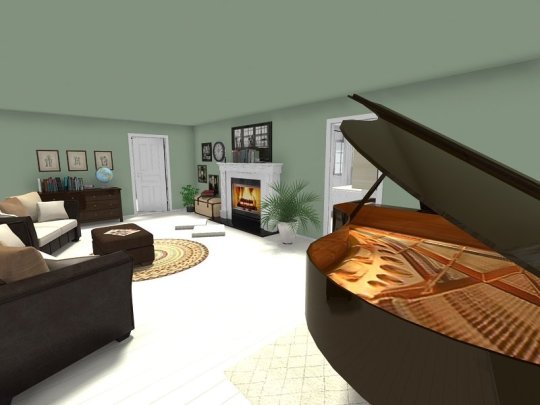
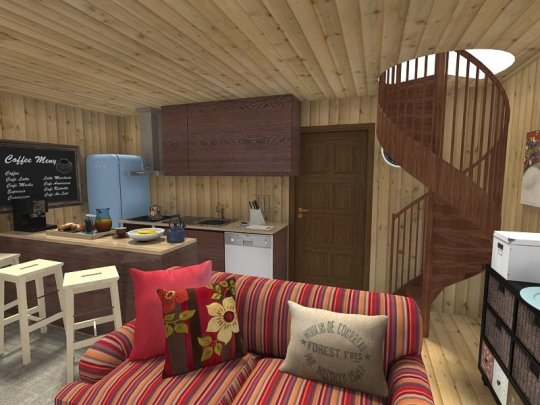

Here’s an example for how you can use it


326K notes
·
View notes
Text
90% of writing advice can be thrown out the window for your first draft.
Show don’t tell? Ignore.
Basic grammar and punctuation? Unnecessary.
Physical descriptions of characters? Don’t need to bother.
Solid plot? That’s for later.
The words don’t come as fast when you’re thinking of the best way to put them together. It doesn’t have to be pretty, or much more than inconsistent nonsense. The point is to have it exist.
Effective storytelling is for subsequent drafts! Go write some nonsense!
46K notes
·
View notes